Host Kevin Patton alerts us to the potential impact of influenza and other outbreaks on our courses and provides advice and options for preparation, handling impacts, and more! In the absence of outbreaks, these tips also help cope with normal winter absences resulting from illnesses.
00:42 | Why Winterize in Mid Winter?
04:16 | Sponsored by AAA
04:33 | Learning from Past Epidemics and Pandemics
08:49 | Sponsored by HAPI
09:11 | Staying Home. I Mean It!
16:04 | Sponsored by HAPS
21:49 | Survey Says...
22:19 | Final Thoughts
26:56 | Staying Connected
04:16 | Sponsored by AAA
04:33 | Learning from Past Epidemics and Pandemics
08:49 | Sponsored by HAPI
09:11 | Staying Home. I Mean It!
16:04 | Sponsored by HAPS
21:49 | Survey Says...
22:19 | Final Thoughts
26:56 | Staying Connected
If you cannot see or activate the audio player click here.
Please take the anonymous survey: theAPprofessor.org/survey
Questions & Feedback: 1-833-LION-DEN (1-833-546-6336)
Follow The A&P Professor on Twitter, Facebook, Blogger, Nuzzel, Tumblr, or Instagram!
Please take the anonymous survey: theAPprofessor.org/survey
Questions & Feedback: 1-833-LION-DEN (1-833-546-6336)
Follow The A&P Professor on Twitter, Facebook, Blogger, Nuzzel, Tumblr, or Instagram!
Why Winterize in Mid Winter?
3.5 minutesWe are now in a flu (influenza) season and on the verge of a coronavirus pandemic. Maybe we should have talked about this earlier, eh? But better late than never!
- CDC expects ‘community spread’ of coronavirus, as top official warns disruptions could be ‘severe’ (news summary) my-ap.us/2TjciVO
- World is approaching coronavirus tipping point, say experts (news summary) my-ap.us/2vel7bp
- Image: influenza structure my-ap.us/2Vlk58u
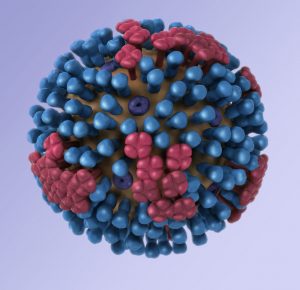
Sponsored by AAA
0.5 minutes- A searchable transcript for this episode, as well as the captioned audiogram of this episode, are sponsored by the American Association for Anatomy (AAA) at anatomy.org.
- Searchable transcript
- Captioned audiogram
- Don't forget—HAPS members get a deep discount on AAA membership!

Learning From Past Epidemics and Pandemics
4 minutesBack in the Spanish flu pandemic of 1918, St. Louis had a much lower impact than other major U.S. cities. The key was implementation of "social distancing," which we can implement in our personal lives—and in our courses.
- Quarantine during 1918 Spanish flu epidemic saves lives (retrospective on how closing things down helped stem an epidemic in St. Louis) my-ap.us/38VFJUJ
- Information About Social Distancing (fact sheet) my-ap.us/2TaEla1
- Influenza—Flu (CDC information hub regarding influenza) my-ap.us/3a5W8WN
- Image: Spanish flu in St. Louis 1918 my-ap.us/3c4mABR
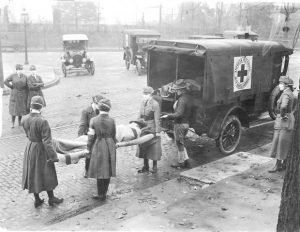
Sponsored by HAPI Online Graduate Program
0.5 minuteThe Master of Science in Human Anatomy & Physiology Instruction—the MS-HAPI—is a graduate program for A&P teachers. A combination of science courses (enough to qualify you to teach at the college level) and courses in contemporary instructional practice, this program helps you power up your teaching. Kevin Patton is a faculty member in this program. Check it out!
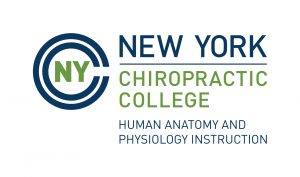
Staying Home. I Mean It!
7 minutesYeah, we want to come to school. We want our students to be regular participants in class. But, you know, sometimes the public good takes precedent over what we think is "right" or honorable.
- EVEN MORE Tricks for Retention & Success in Online Courses | Episode 23 (where I discuss keeping a close eye on student progress and participation)
- Bissinger's 75% dark chocolate (a St. Louis favorite; Kevin's favorite; your new favorite?) amzn.to/2uuoL0y
- Give Your Course a Half Flip With a Full Twist | Episode 6 (where I talk about that green pen)
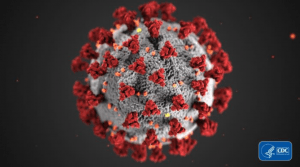
Sponsored by HAPS
0.5 minutesThe Human Anatomy & Physiology Society (HAPS) is a sponsor of this podcast. You can help appreciate their support by clicking the link below and checking out the many resources and benefits found there. Don't forget the HAPS Awards, which provide assistance for participating in the HAPS Annual Conference.
- Anatomy & Physiology Society
- It's coming soon!
- Kevin’s Unofficial Guide to the HAPS Annual Conference | 2019 Edition | Episode 42
- Now is a good time to submit your questions, comments, tips, & stories for the upcoming 2020 edition!

The Preparation Phase
5.5 minutesPreparation is a great strategy to minimize harm, right?
Don't forget to call in with your ideas on stealth teaching (for an upcoming episode).
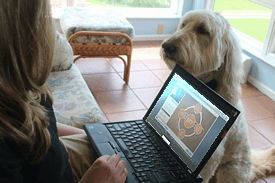
Survey Says...
0.5 minute- Please take about 5 minutes to answer some questions—it will really help improve this podcast!
- Yes; I'll give you extra credit if you fill out a survey!
- theAPprofessor.org/survey

Final Thoughts
4.5 minutes- Nuzzel link: nuzzel.com/theAPprofessor ( almost-daily headlines of interest to A&P teachers, curated by Kevin Patton)
- Influenza—Flu (CDC information hub regarding influenza) my-ap.us/3a5W8WN
- Coronavirus Disease 2019—COVID-19 (CDC information hub) my-ap.us/2VuLG7h
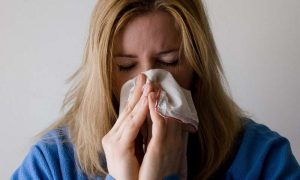
Apology: Long after recording this episode, I realized that the term "Spanish flu" that I used is a derogatory term. My intent was not to cause harm and I apologize to everyone hurt by my use of the term. Please listen to Episode 72 for the audio apology.
Click here to listen to this episode—or access the detailed notes and transcript.

No comments:
Post a Comment